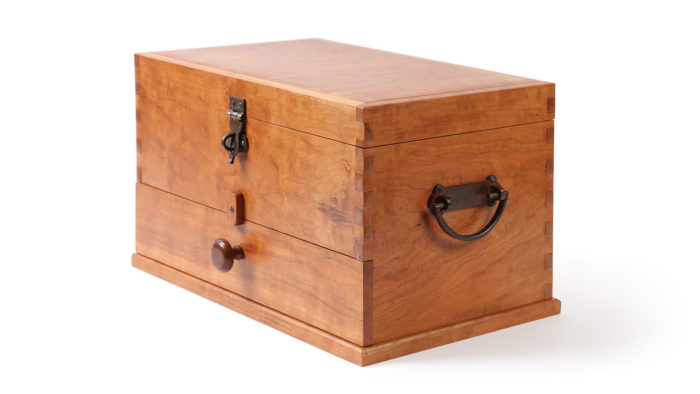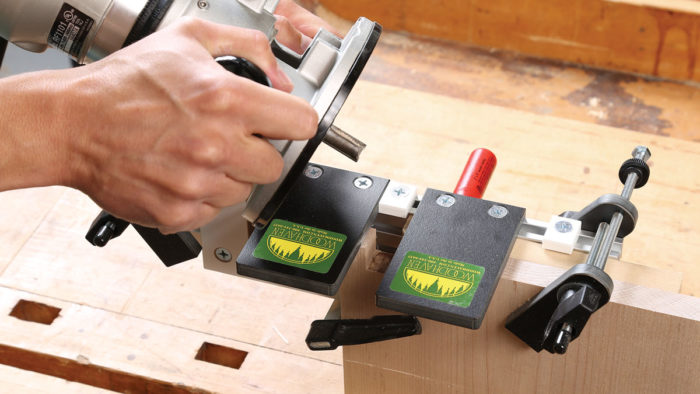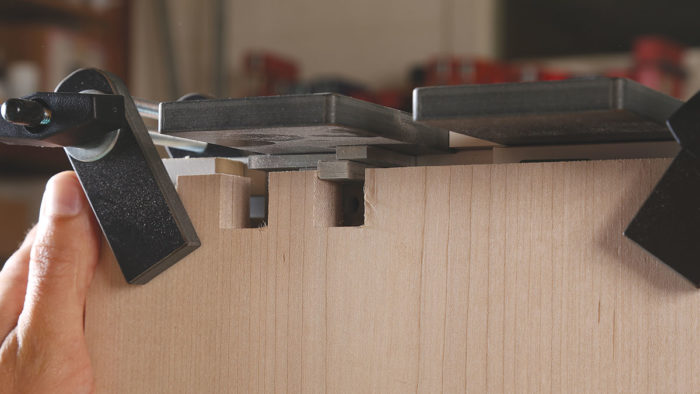
Box joints, also known as finger joints, are often cut using a tablesaw or router, and are modest in size, with fingers between 1⁄8 in. and 3⁄4 in. wide (the limits of a dado blade). They were originally used in cigar boxes, which had “locked” corners, but have become a popular joint for many small boxes, as they offer great strength and are attractive.
Larger finger joints are also a key element in Arts and Crafts furniture. Woodhaven’s 4556 portable box-joint jig is designed to cut these larger joints. The jig clamps to the end of a board. It’s designed to be used with a handheld router, but I also used it at the router table and it worked very well.

The real test of a box-joint jig is wide stock, where the jig must be moved to cut the joint across the board’s full width. While cutting the 11-in.-wide sides of the tool chest shown here, the jig maintained accuracy.
The jig, which requires a Porter-Cable-style guide bushing mounted in the router table, comes with setup blocks that work quite well for establishing the proper spacing of joints. Using a 1⁄2-in. spiral cutter in the router, you can easily make fingers ranging in width from about 5⁄8 in. to about 1-1⁄2 in. After you’ve dialed in the fit of the joint, you can go to town with the Woodhaven jig, joining corner after corner with a perfect fit.
—Doug Stowe is a well-known box maker in Eureka Springs, Ark.

No-measure setup. The jig includes setup blocks that align the template guides and the adjustable stops used to index the workpiece as you cut successive notches.

Guided rout. A guide bushing in the router follows the jig’s black template guides, ensuring that all of the notches are identical and accurately sized.

Accuracy assured. A stop on the jig’s face adjusts to match the size of the notches being cut. The jig is moved along the workpiece a notch at a time, cutting fingers the right size.

















Log in or create an account to post a comment.
Sign up Log in